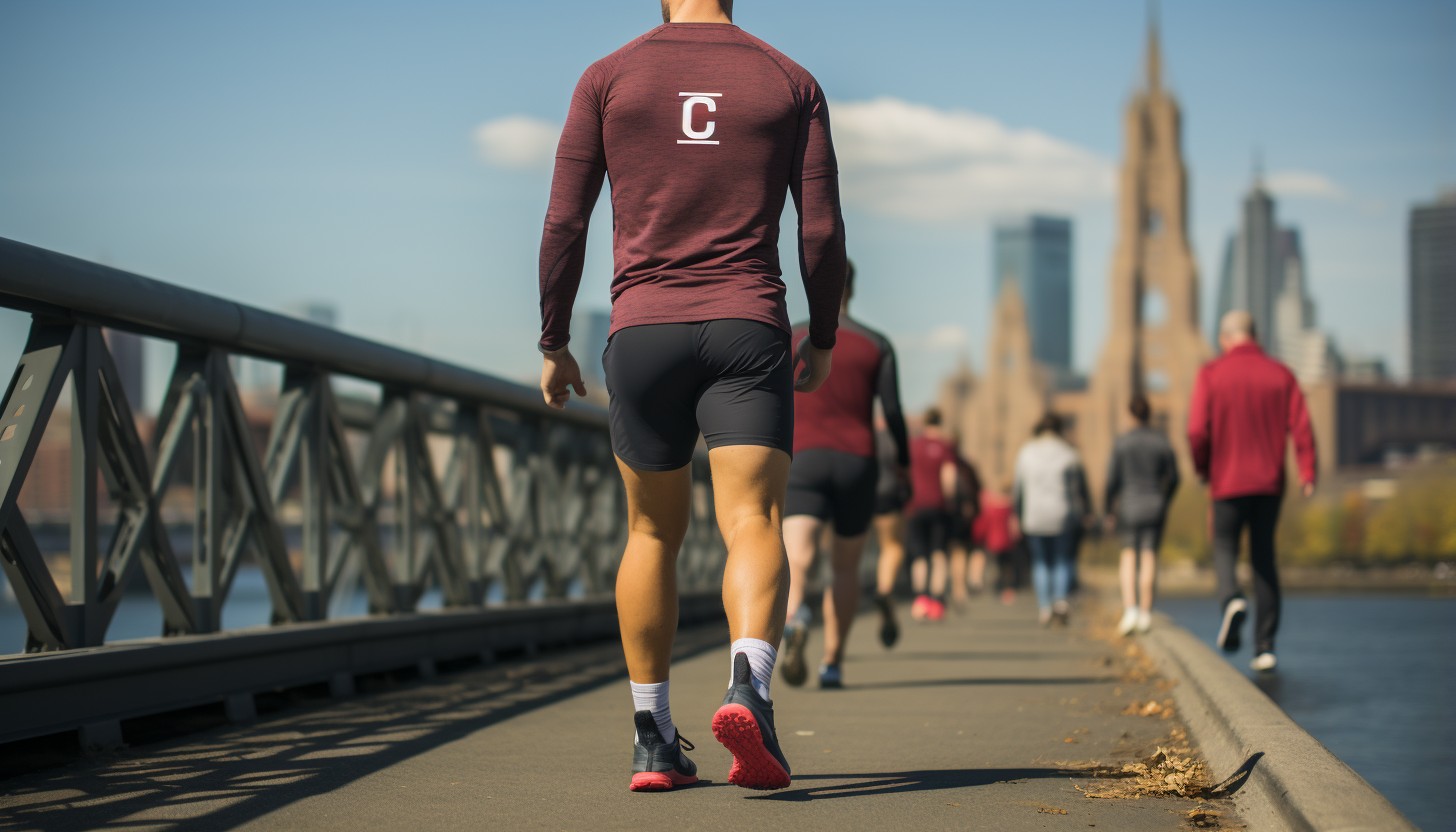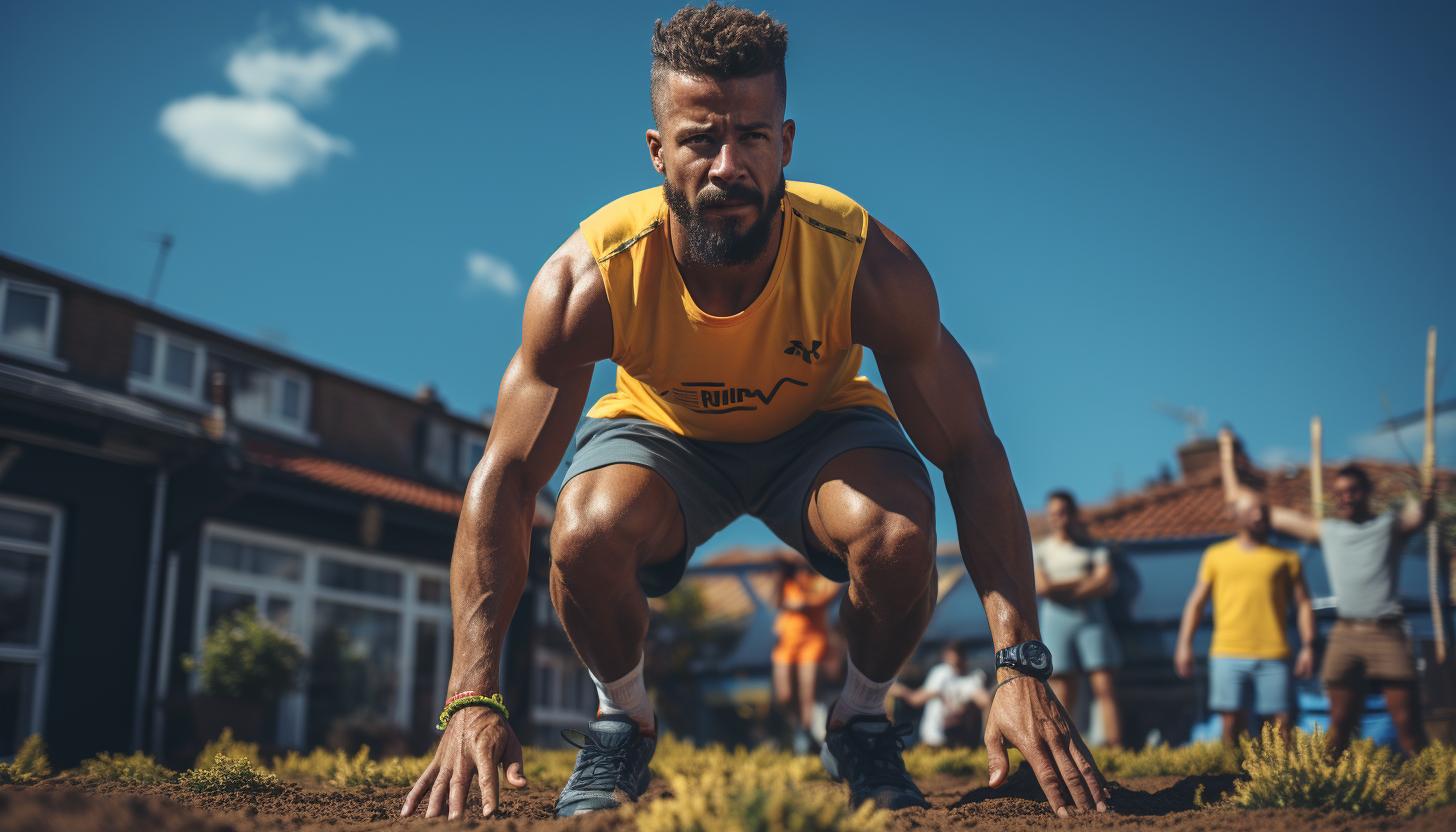Strength Training for 10K Runners: Exercises to Enhance Performance

Imagine lacing up your running shoes, feeling the excitement building as you prepare for a 10K race. You know that strength training is key to enhancing your performance and pushing through those challenging moments on the course.
This article will guide you through essential exercises that target key muscle groups, plyometric drills to boost speed and power, and core stability workouts to incorporate into your training routine.
Get ready to take your 10K running game to the next level!
The Benefits of Strength Training for 10K Runners

There’s no denying the benefits of strength training for 10K runners. Incorporating strength training into your routine can play a crucial role in injury prevention and improving your running economy. By targeting specific muscle groups, you can enhance your performance and take your running to the next level.
Strength training helps prevent injuries by strengthening the muscles, tendons, and ligaments that support your joints. It improves stability and reduces the risk of common running-related injuries such as shin splints, IT band syndrome, and stress fractures. Additionally, it helps correct muscular imbalances and promotes proper form while running.
Furthermore, strength training can greatly improve your running economy. It enhances muscle power and efficiency, allowing you to maintain a faster pace with less effort. Strengthening key muscle groups like the glutes, hamstrings, quadriceps, core muscles, and calf muscles can lead to better stride length and reduced energy expenditure during each stride.
Key Muscle Groups to Target for Enhanced Performance

To maximize performance, it’s important to focus on the key muscle groups for 10k runners. By targeting these muscles, you can improve your speed, endurance, and overall running ability. Here are some essential areas to concentrate on:
– Quadriceps: Strong quads are crucial for generating power and propelling yourself forward during a race. Incorporate exercises like squats and lunges into your training routine.
– Hamstrings: The hamstrings play a vital role in extending your leg behind you and maintaining proper running form. Exercises such as deadlifts and hamstring curls can help strengthen this muscle group.
– Glutes: Your gluteus maximus is the largest muscle in your body and plays a significant role in stabilizing your hips and generating power during running. Include exercises like hip bridges and single-leg squats to target this area effectively.
– Core: A strong core is essential for stability, balance, and overall body control while running. Focus on exercises like planks, Russian twists, or bicycle crunches to engage your abdominal muscles.
In addition to targeting these key muscle groups, don’t forget about flexibility exercises for 10k runners. Stretching before and after workouts can help prevent injuries and improve range of motion.
Proper nutrition also plays a crucial role in optimizing performance. Make sure you fuel your body with balanced meals rich in carbohydrates for energy, protein for muscle repair, and healthy fats for overall health.
By focusing on these key muscle groups, incorporating flexibility exercises into your routine, and following proper nutrition tips for optimal performance, you will be well on your way to becoming a stronger 10k runner.
Now let’s move on to discussing essential resistance exercises for 10k runners.
Essential Resistance Exercises for 10K Runners

Incorporating resistance exercises into your routine can help 10k runners build strength and improve their performance. By challenging your muscles with resistance bands and bodyweight exercises, you can enhance your running efficiency, endurance, and speed.
Here are some essential resistance exercises that will target key muscle groups used in running:
| Exercise | Muscle Group Targeted |
|---|---|
| Squats | Quadriceps, Glutes |
| Lunges | Hamstrings, Glutes |
| Push-ups | Chest, Shoulders |
| Plank | Core |
| Standing Rows | Back |
| Resistance Bands | Full Body |
Squats and lunges engage the lower body muscles responsible for power and stability. Push-ups strengthen the upper body to maintain proper posture during long-distance runs. Planks challenge the core muscles to improve stability and prevent injuries. Standing rows target the back muscles for better posture while running.
Resistance bands are versatile tools that can be incorporated into various exercises to add extra resistance. They provide constant tension throughout the movement, activating multiple muscle groups simultaneously.
Plyometric Drills to Improve Speed and Power

By incorporating plyometric drills into your routine, you can improve your speed and power as a 10k runner. Plyometric exercises involve explosive movements that enhance the stretch-shortening cycle of your muscles, allowing for greater force production and increased running efficiency.
Here are some key benefits of incorporating plyometric drills into your training:
– Improved sprinting ability: Plyometrics help develop fast-twitch muscle fibers, which are crucial for quick bursts of speed during races.
– Increased power output: By generating more force with each step, you’ll be able to propel yourself forward with greater efficiency and speed.
– Enhanced muscular coordination: Plyometrics require precise movements and proper form, helping you develop better coordination between different muscle groups.
– Reduced risk of injury: Proper form is essential in plyometric exercises to avoid unnecessary strain on joints and muscles. This focus on technique can help prevent injuries during both training sessions and races.
Remember to always prioritize safety when performing plyometric drills. Start with low-intensity exercises and gradually increase intensity over time. By incorporating these techniques into your training regimen, you’ll be well on your way to achieving faster race times and becoming a stronger 10k runner.
Incorporating Core Stability Workouts Into Your Training Routine

Make sure you prioritize core stability workouts in your training routine to improve your overall running form and prevent injuries. Core stability is crucial for 10K runners as it helps maintain proper posture, balance, and control during the race. By strengthening your core muscles, you can enhance your running efficiency and reduce the risk of common injuries such as lower back pain or hip discomfort.
In addition to core stability exercises, it is also important to incorporate flexibility training into your routine. Flexibility plays a key role in preventing muscle imbalances and promoting a full range of motion while running. This can help optimize your stride length and minimize the risk of muscular strains or pulls.
Balance exercises are another essential component of a well-rounded training plan for 10K runners. They help improve proprioception (the body’s awareness of its position in space) and enhance neuromuscular coordination. By enhancing balance, you can run more efficiently, decrease the risk of tripping or falling, and even improve overall performance.
To give you an idea of some effective core stability exercises that target different muscle groups, here is a table outlining three examples:
| Exercise | Targeted Muscles |
| Plank | Abs, lower back |
| Russian Twist | Obliques |
| Superman | Lower back, glutes |
Incorporating these exercises into your weekly routine will help strengthen your core muscles and ultimately enhance your running performance. Remember to start gradually and consult with a professional if you have any underlying medical conditions or concerns about performing these exercises safely.
Conclusion
In conclusion, incorporating strength training into your routine as a 10K runner is essential for enhancing your performance. By targeting key muscle groups and performing resistance exercises, you can improve your speed, power, and endurance.
Additionally, plyometric drills can further enhance your speed and explosive power. Don’t forget to incorporate core stability workouts to improve overall balance and control.
So why wait? Start adding these exercises to your training regimen and watch as your performance reaches new heights. Ready to take on the challenge?






